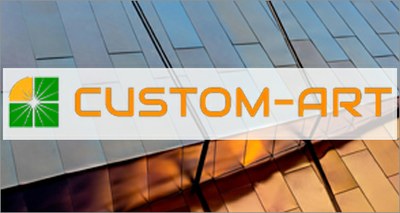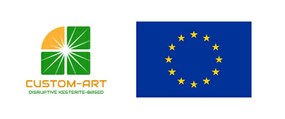Innovation: ENEA part of European project for new generation photovoltaic modules
18/2/2021
 Developing flexible photovoltaic modules that can be integrated into architectural elements (BIPV)[1] and industrial and sustainable products (PIPV),[2] thanks to the exclusive use of non-toxic and earth-abundant elements. This is the goal of the European project CUSTOM-ART [3] -funded by Horizon 2020 with 7 million euro- which comprises ENEA and 15 other partners [4] including companies and research institutes from 10 European countries.
Developing flexible photovoltaic modules that can be integrated into architectural elements (BIPV)[1] and industrial and sustainable products (PIPV),[2] thanks to the exclusive use of non-toxic and earth-abundant elements. This is the goal of the European project CUSTOM-ART [3] -funded by Horizon 2020 with 7 million euro- which comprises ENEA and 15 other partners [4] including companies and research institutes from 10 European countries.
In particular, CUSTOM-ART aims to bring the kesterite-based technology modules, which is a semiconductor compound consisting of copper, tin, zinc, sulfur and selenium, to a higher maturity level, achieving a TRL[5] 7, compared to the current 4.5, through very competitive conversion efficiencies (20% at cell level and 16% at module level) and long life (over 35 years), at a lower production cost (less than 75 € / m2).
Moreover, the project foresees the development of both opaque (on steel or polymeric supports) and semitransparent (on polymeric support) flexible modules, engineered so as to make their life cycle in line with the circular approach.
ENEA researchers are engaged in numerous activities, including: optimization of the base material through changes to its chemical composition, introduction of alkaline elements and improvement of synthesis techniques; exploration of new materials to develop front and rear contact of the kesterite cell; study of the degradation mechanisms of devices subjected to stress-tests; participation in building and interpreting a Life Cycle Assessment that includes the manufacturing process, the recovery of materials or their disposal and a cost analysis to identify the economic impact of the various solutions developed; support to the dissemination of the outcomes of the project and the drafting of the plan for their exploitation to enhance the know-how generated.
 "The flexible modules will be made of semiconductor materials having the crystallographic structure of kesterites, one of the most promising materials for manufacturing thin-film inorganic photovoltaic modules with non-toxic chemical elements" - Alberto Mittiga, of the ENEA Department of Energy Technologies and Renewable Sources and project representative for the Agency, explained- .
"The flexible modules will be made of semiconductor materials having the crystallographic structure of kesterites, one of the most promising materials for manufacturing thin-film inorganic photovoltaic modules with non-toxic chemical elements" - Alberto Mittiga, of the ENEA Department of Energy Technologies and Renewable Sources and project representative for the Agency, explained- .
"The possibility of being deposited on flexible substrates, in addition to good conversion efficiencies, stability over time and low production costs, make these devices ideal to replace passive elements in architecture, mobility and urban furniture and contribute to the creation of "Near Zero Energy Buildings" and "Net Zero Energy Districts".
Project Website: http://www.custom-art-h2020.eu/
For more information please contact:
Alberto Mittiga – Photovoltaic and Industrial Engineering Laboratory – Department of Energy Technologies and Renewable Sources ENEA - alberto.mittiga@enea.it
[1] Building-integrated photovoltaics
[2] Product integrated photovoltaics
[3] Disruptive kesterites-based thin film technologies CUSTOMised for challenging ARchiTectural and active urban furniture applications
[4] IREC Fundació Institut de Recerca en Energia de Catalunya (Spain), IMEC (Interuniversitair Micro-Electronica Centrum (Belgium), EMPA (Eidgenoessische Materialpruefungs Und Forschungsanstalt (Switzerland), HZB (Helmholtz-Zentrum Berlin für Materialien Und Energie (Germany), IPC (Centre Technique Industriel de la Plasturgie et des Composites (France), University of Tallin (Estonia), University of Oldenburg (Germany), University of Oxford Brookes (United Kingdom), University of Uppsala (Sweden), Crystalsol Ou (Estonia), Imra Europe Sas (France), Ayesa Advanced Technologies SA (Spain), Eco Recycling Srl (Italia), Sunplugged - Solare Energiesysteme GmbH (Austria), RESCOLL (France), Kunststoffverarbeitung Schiestl GmbH (Austria).
[5] Technology Readiness Level is a scale ranging from 1 to 9 used to measure the progress or maturity level of a technology
